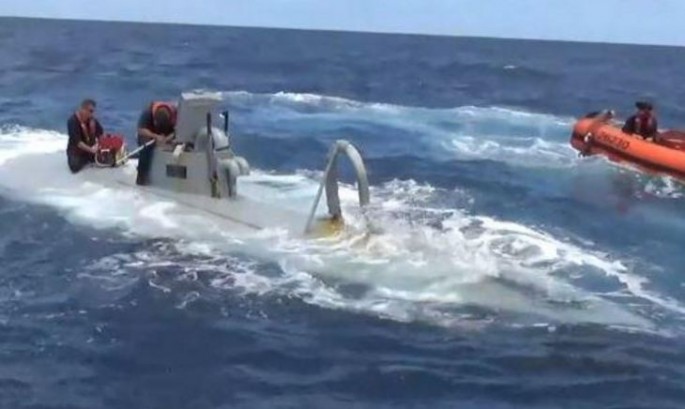The U.S. Coast Guard reported it had seized a record 189,000 kilograms (416,000 pounds) of cocaine with an estimated value of $5.6 billion in 260 maritime drug interdictions for the fiscal year ending Sept. 30.
It also announced it had either sunk or captured six "self-propelled semisubmersibles" (SPSS), otherwise known as narco-submarines, drug-subs or Bigfoot submarines built by wealthy Colombian drug cartels.
Colombian drug cartel members export cocaine from Colombia to Mexico on their fleet of drug-subs and fast moving narco boats. The coke is often transported overland to the United States.
Some 69 percent of ocean-delivered narcotics in the past year were seized in a Pacific Ocean area called the "Western Hemisphere Transit Zone."
Illicit drugs coming to the United States from South America pass through this zone with an area of 18 million square kilometers, roughly twice the size of the continental United States. The Transit Zone includes the Caribbean Sea, the Gulf of Mexico and the eastern Pacific Ocean.
Each drug sub typically carries several metric tons of cocaine and sometimes up to 9 metric tons. The largest cargo carried by an intercepted semi-submersible drug sub weighed 7.7 metric tons (17,000 lb). This capture took place in 2015.
Despite the Coast Guard's success in interdicting drug-subs, the United States Department of Homeland Security estimates narco-submarines account for 32 percent of all maritime cocaine flow between Latin America and the United States.
In one of the latest submarine interceptions last Sept. 6, the U.S. Coast Guard Cutter Waesche seized more than 2.5 metric tons of cocaine worth $73 million from a custom-built, narco-submarine in Pacific Ocean waters off the coast of Central America.
The sub's five crew members were arrested while attempting to scuttle the submarine.



























